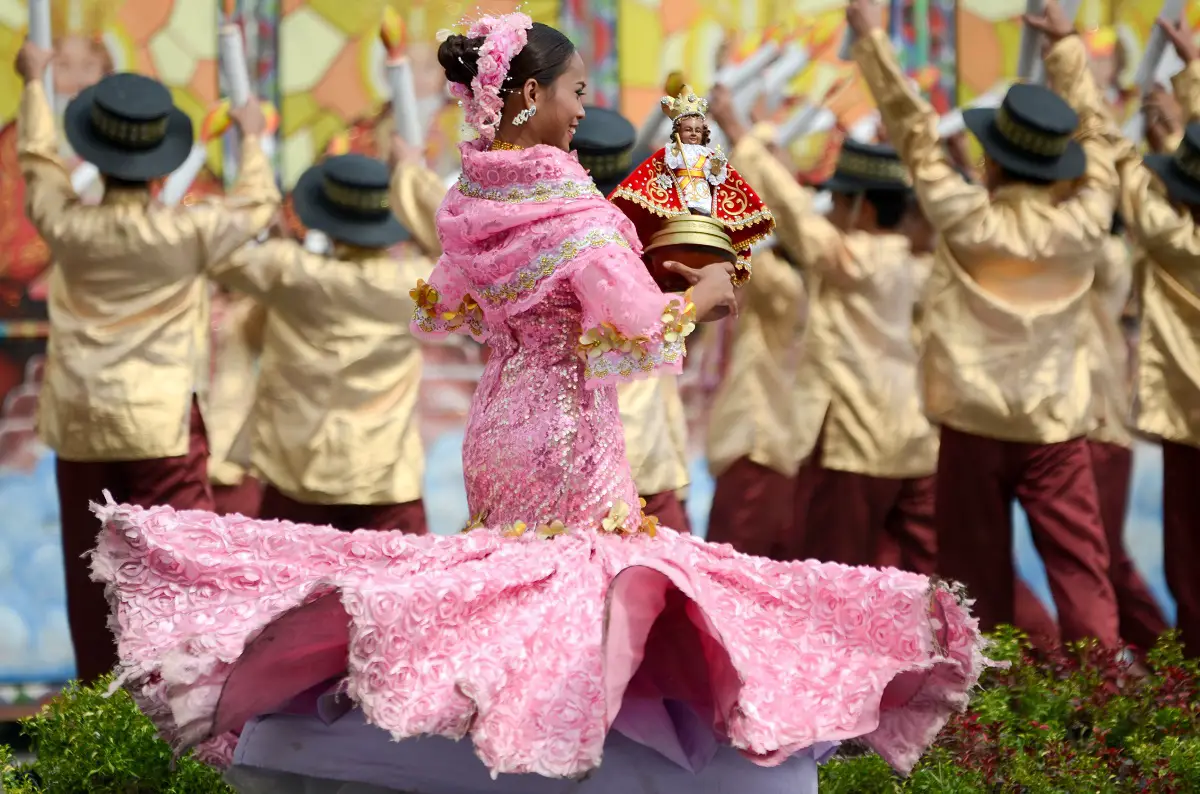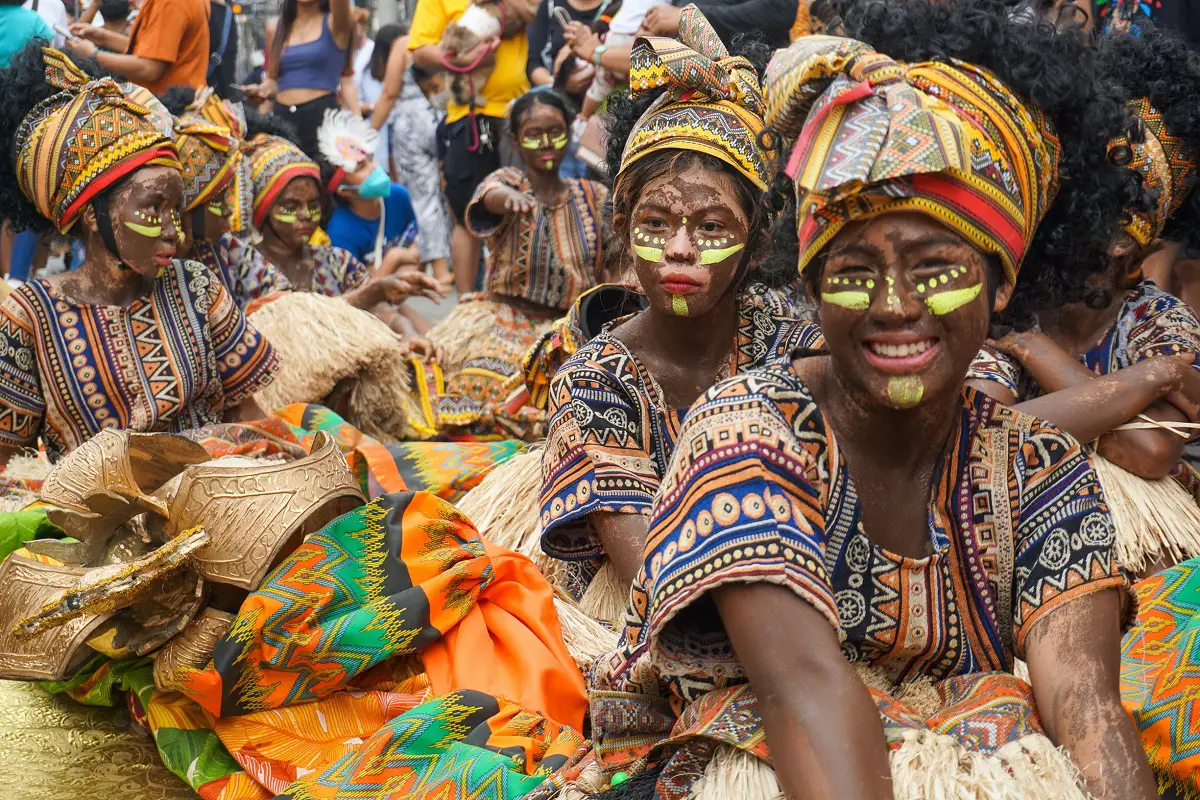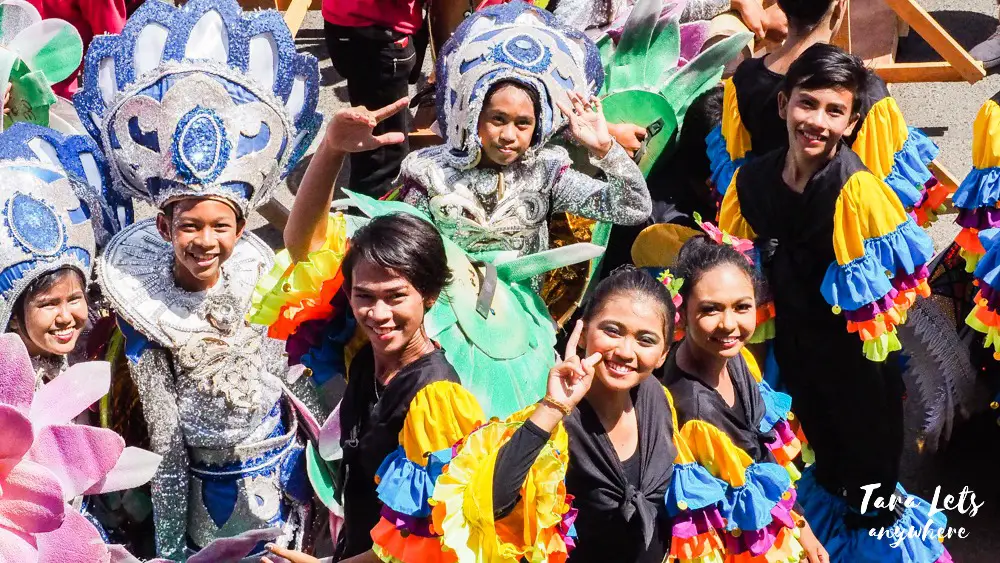
10 Best Religious Festivals in the Philippines
The Philippines is perhaps one of the most religious countries in the world, with over 80% of the population being Roman Catholic. As such, it’s no surprise that there are numerous religious festivals celebrated throughout the year.
One thing to note is that some of these festivals have non-religious roots but have evolved over time to showcase the current beliefs of Filipinos. For instance, the Ati-Atihan Festival, one of the most anticipated festivals in the country, goes back to the 13th century when Malay immigrants from Borneo painted their faces black while singing and dancing as a way to give thanks to the Aeta (or Ati) indigenous group who welcomed them into their lands. The Spanish colonizers later added the celebration of Sto. Nino into the festival to remove its pagan influences.
Today, religious festivals in the Philippines are well and alive not just to showcase the faith and devotion of Filipinos but also to celebrate the culture and tradition of its communities. With its colorful parades and lively ambiance, the festivals have become a tourist attraction in themselves and is one of the must-do experiences in the Philippines.
Without further ado, here are the best religious festivals in the Philippines that you should see:
Contents
1. Sinulog Festival

One of the most famous religious festivals in the Philippines is the Sinulog Festival, held every third Sunday of January in Cebu City. This festival honors the Santo Niño (Child Jesus) and brings together people from all walks of life to celebrate with grand parades, street parties, and religious processions.
The main highlight of the festival is the Sinulog Grand Parade, where participants dress in vibrant costumes and dance to the beat of drums and gongs. A reenactment of the baptism of Queen Juana and Rajah Humabon also takes place.
2. Ati-Atihan Festival
The Ati-Atihan Festival, also known as the “Mother of All Festivals,” is celebrated every third week of January in Kalibo, Aklan.
This week-long festival is a colorful and lively celebration of the Santo Niño de Kalibo and showcases the indigenous culture of the Ati tribe. Participants paint their bodies in black and wear colorful costumes while dancing to traditional music as they parade through the streets.
3. Dinagyang Festival

The Dinagyang Festival is one of the most popular festivals in the Philippines, showcasing the socio-cultural and religious beliefs of the Ilonggos.
Typically held on the fourth Sunday of January in Iloilo City, this event is in honor of the Santo Niño and commemorates the arrival of Malay settlers in the island of Panay.
Now, you might be thinking that it sounds similar to Ati-Atihan Festival in Iloilo, and that’s because it is! Dinagyang Festival started as an offshoot of Ati-Atihan Festival and eventually developed to be its own world-class event.
The festival is famous for its vibrant and energetic street dancing competitions, where performers, adorned in tribal costumes and body paint, dance to the rhythm of thunderous drum beats. Aside from merrymaking, the festival is also a venue to provide help to the Aeta indigenous group through scholarships, livelihood, and medical services.
4. Moriones Festival
The Moriones Festival is held during Holy Week (usually in April) on the island of Marinduque. This festival reenacts the story of Longinus, a Roman soldier who converted to Christianity after witnessing Jesus’ crucifixion.
Men and women dress up in intricate costumes and masks resembling Roman soldiers and parade through town, while others participate in passion plays depicting biblical scenes.
The Moriones Festival is one of the most anticipated events during Holy Week. Witnessing the festival is also a great opportunity to explore the island of Marinduque, especially its most popular attraction — Maniwaya Island.
5. Feast of the Black Nazarene

The Feast of the Black Nazarene (known locally as “Pista ng Itim na Nazareno”) is another profound religious festival celebrated in the Philippines, specifically in the city of Manila.
Taking place every 9th of January, the event centers around a life-sized, dark-skinned statue of Jesus Christ carrying the cross — the Black Nazarene — revered by many Filipinos for its supposed miraculous powers. The annual procession, called “traslacion,” sees millions of barefoot devotees trying to touch or get close to the statue, believing this act of faith can lead to answered prayers and miracles.
With of Filipino Catholics joining the procession, enduring the heat and intense crowd, it’s one of the most powerful religious events in the country.
6. Flores de Mayo
The Flores de Mayo (or “Flowers of May“) is one of the most significant Philippine religious festivals. Celebrated throughout the entire month of May, it pays homage to the Virgin Mary and coincides with the colorful Santa Cruzan parade.
The event is marked by daily offerings of flowers and rosaries to the Virgin Mary, which signifies the people’s reverence and devotion. The culmination of Flores de Mayo is the Santa Cruzan, a procession that reenacts the biblical search of the Holy Cross by Queen Helena and her son, Constantine the Great. It is a privilege to be part of the Santacruzan, as the most beautiful ladies in the town are chosen to represent various historical and biblical figures.
This Catholic festival is held as a show of faith to the Virgin Mary and also as a way to seek intercession for personal troubles.
7. Peñafrancia Festival
One of the most popular religious festivals in the Philippines is the Peñafrancia Festival in Naga City, Bicol. It is also said to be the biggest Marian festival in Asia.
Held every third Saturday of September, this week-long event honors the Our Lady of Peñafrancia, the patroness of Bicol (also referred to as “Ina” by the Bicolanos).
It is known for its fluvial procession where the image of the Virgin Mary is transferred from its shrine to the Naga Cathedral via a pagoda-style barge adorned with bright lights and flowers. Devotees wearing red (which symbolizes the fire of their devotion) paddle the barge along the Naga River while thousands of spectators, holding candles and singing hymns, line up the riverbanks.
Apart from these, like similar festivals in the country, there is also a much-awaited street parade with participants from different schools wearing colorful outfits and displays.
8. Pahiyas Festival
The Pahiyas Festival is a lively celebration that anyone can enjoy, regardless of their views on religion. Celebrated every 15th of May in Lucban, Quezon Province, this festival is held in honor of San Isidro Labrador, the patron saint of farmers.
The event stands out due to the extravagant decoration of houses with colorful agricultural produce, handicrafts, and even kiping — a type of rice paste wafer shaped into leaves and dyed in vibrant colors. The most beautifully decorated house is awarded, making the competition lively and enthusiastic.
The festival is a thanksgiving tradition for a bountiful harvest and a way for the locals to display their agricultural prosperity. For spectators, it’s a fun event to get to know about the locals, products, and even tourist attractions in Quezon Province.
9. Zamboanga Hermosa Festival

Speaking of the most captivating religious festivals in the Philippines, witnessing the Zamboanga Hermosa Festival is a must!
Celebrated every October in Zamboanga City, it is held in honor of the miraculous image of Our Lady of the Pillar (Nuestra Señora del Pilar). The festival is a vibrant mix of religious ceremonies, street dancing, regattas, and trade fairs.
An iconic part of this celebration is the Regatta de Zamboanga, where colorful vintas (traditional sailboats) race across the blue waters of the city. There is also a much-awaited street parade, various local competitions, and trade fair where you can purchase local products such as woven clothes and accessories, agricultural produce, and more.
10. Obando Fertility Rites
The Obando Fertility Rites is a distinct religious festival in the Philippines. Held from May 17 to 10 annual in Obando, Bulacan, it features childless couples and thankful parents flocking to the streets to dance in honor of three patron saints: San Pascual, Santa Clara, and Nuestra Señora de Salambao.
The participants sway to a folk tune known as the “Sayaw sa Obando,” believing that their dance is a prayer for children, a good partner, or a prosperous life. The sight of devotees, dressed in traditional Filipino attire, joyously dancing with hopeful hearts, gives the festival an air of joy and faith that is truly moving.
A lot of the festivals in the Philippines have a religious theme and so it’s unsurprising that the most popular festivals in the country are held in honor of Sto. Nino, or other saints recognized by the Catholic Church. Regardless of your personal beliefs, it’s a fun experience witnessing and participating in events during these religious festivals, as they aren’t just about faith but also the culture, tradition, and sense of community of Filipinos.
What other Philippine religious festivals have you attended? Let us know in the comment section below!
What to read next:
Love festivals? Check out these festivals in in the Philippines!
Here are the festivals we’ve attended:
- Lambayok Festival (San Juan, Batangas)
- Tabak Festival (Tabaco, Albay)
- Zamboanga Hermosa Festival (Zamboanga City)
- Gapo at Palusong Festival (General Nakar)

Katherine Cortes is a long-time backpacker and a freelance writer/editor. She likes beaches, snorkeling trips, and relaxing staycations (preferably with bath tubs!).



